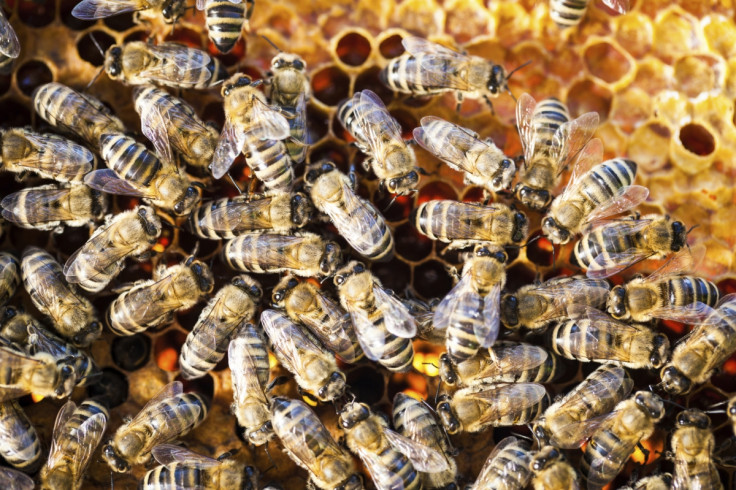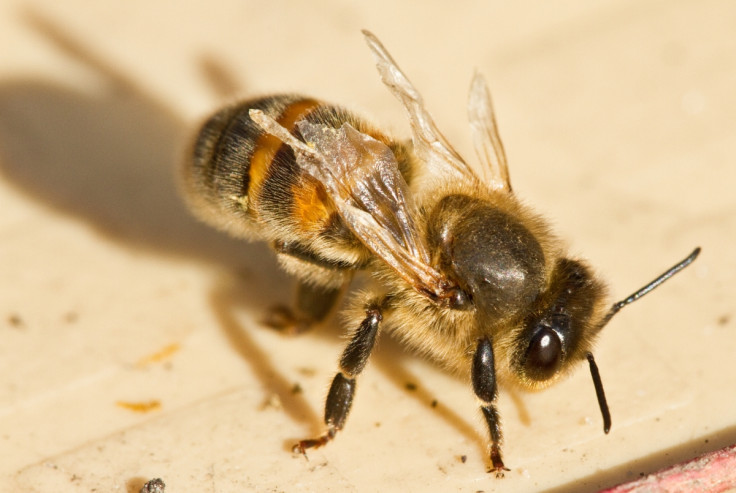Bee decline: Two diseases are combining to destroy global honey bees

Wild bees have been in the wars over the past ten years. Since 2005, their numbers in the UK have fallen by two-thirds, and despite conservation attempts, that trend does not look like it is going to end anytime soon.
Why are they declining? There is a long list. Disease, changing agricultural practices, bee farming, loss of habitat, climate change; the list goes on.
Unfortunately, research has come to light that they may have even more to contend with, as two diseases have come together to try and finish them off – and it is all our fault.
Why we need bees
Bees can be annoying – especially when we are trying to enjoy the warm weather and sunshine in our gardens – but we certainly do need them.
Primarily, they help to transfer pollen and seeds from one plant to another. This has multiple implications.
First, this cross-pollination contributes to 30% of our crops being grown for food – ultimately feeding the growing population.
Secondly, if we did not have cross-pollination, 90% of our wild plants would most likely die. Research has estimated that more than 3,000 gigatonnes of carbon is stored in these plants.
To put that into perspective, up until this point, humans have released slightly more than 1,000 gigatonnes of CO<sub>2 into the atmosphere.
Imagine how much impact we have had on the planet already. Now multiply that by three – that is how much of an impact it would make.
Battling on two fronts
Research from the University of Exeter, published in the journal Science, describes how bees are now fighting a battle on two fronts.
The varroa mite is a parasitic mite. It attaches to the body of honey bees, and sucks on their haemolymph – fluid in the blood of the bees. This gradually weakens the bee, eventually leading to death.

Varroa – which has the appropriate scientific name of Varroa destructor – can only reproduce in a honey bee colony, so it naturally targets them as a means to increase their own population.
"The varroa mite is a particular concern for beekeeping," Lena Wilfert told IBTimes UK, author of the University of Exeter report. "In combination with deformed wing virus, an entire colony can be dead by spring."
Wilfert describes in her latest research how varroa is linked to a genetic virus, known as deformed wing virus. This virus uses varroa as a vector for infection.
"Varroa can pick up viruses from the bee's blood," she said. "One of these is the deformed wing virus, originating from the European honeybee."
Deformed wing virus is believed to inhibit flight in bees – meaning they cannot obtain food, and die. The younger the bee is when infected, the worse the deformity. Deformities are not just limited to wings either, as they can also affect the abdomen and head of the bees.
Together, varroa and deformed wing virus make one deadly super-combination. Estimates have suggested the duo have wiped out millions of bees over the past couple of decades.
It almost appears that the disease is working together, in an alliance against bees. Varroa attacks the bee larvae, whilst deformed wing virus kills off the current bees.
Where did this come from?
Ultimately, humans are to blame for this bee epidemic. Researchers have blamed the global trade of commercial bees for the spread of the diseases.

More than 300 years ago, deformed wing virus was limited to Europe. Bee farming became much more widespread at the point, as humans tried to exploit the amount of honey that bees produce.
"Domesticated honeybee colonies are hugely important for our agriculture systems, but this study shows the risks of moving animals and plants around the world," said Roger Butlin, researcher working on the study.
"The consequences can be devastating, both for domestic animals and for wildlife. The risk of introducing viruses or other pathogens is just one of many potential dangers."
Originally, East Asian honeybees were the only insects infected with the varroa parasite.
"The East Asian honeybees are quite good at removing the varroa mite – they can get rid of it," Wilfert told IBTimes UK. "But, the problem lies when European honeybees moved to Asia where they picked up the mite some 100 years ago."
Super-powered team
After years of attacking bees separately, scientists found that both the varroa mite and deformed wing virus have managed to team up.
The deformed wing virus is almost contained inside the varroa mite. As varroa is transferred to a new colony, so is the virus. That basically means that colony has two diseases to contend with.
"Europe is the backbone of the global spread of the bee killing combination of deformed wing virus and varroa," said Wilfert. "This demonstrates that the spread of this combination is largely manmade - if the spread was naturally occurring, we would expect to see transmission between countries that are close to each other, but we found that, for example, the New Zealand virus population originated in Europe."
On a human level, the closest representation of this would be to imagine two deadly diseases working together. For example, malaria and tuberculosis.
That is a scary thought, and the researchers say it is up to humans to try and prevent the spread of the lethal diseases in bees.
"The global virus pandemic in honeybees is man-made not natural," said Mike Boots, co-author of the research. "It's therefore within our hands to mitigate this and future disease problems."
© Copyright IBTimes 2025. All rights reserved.






















